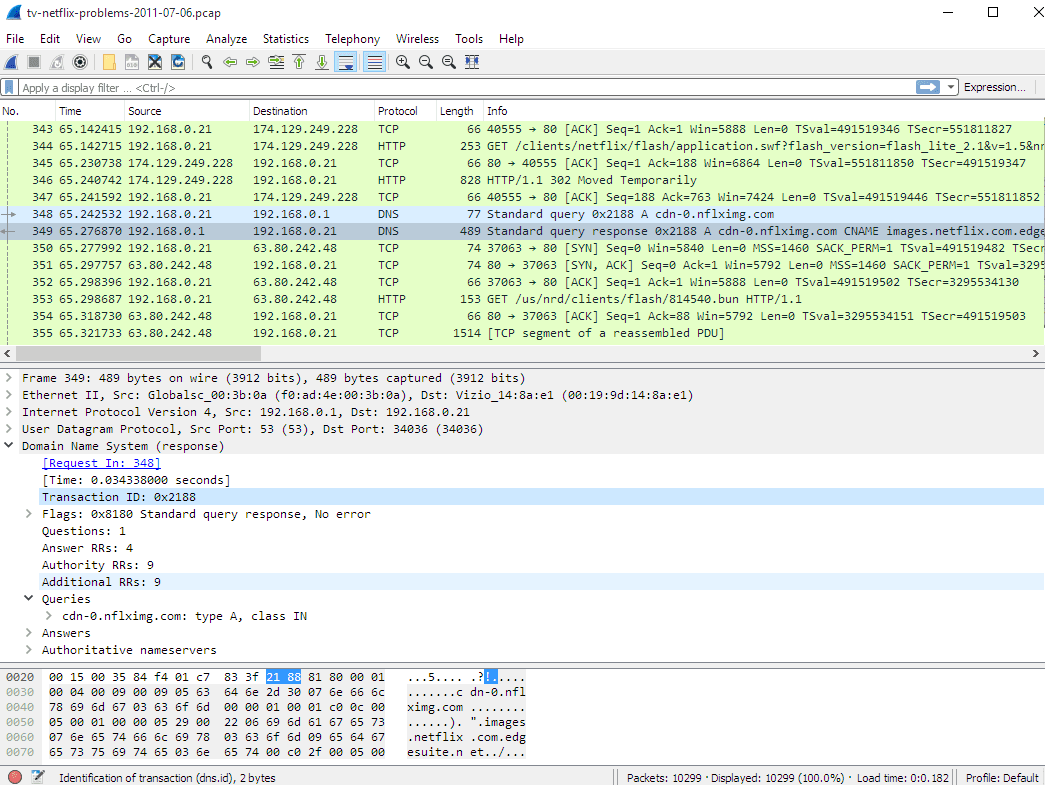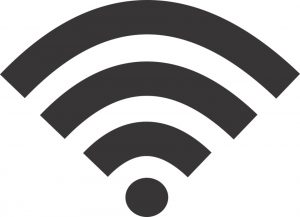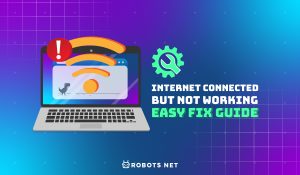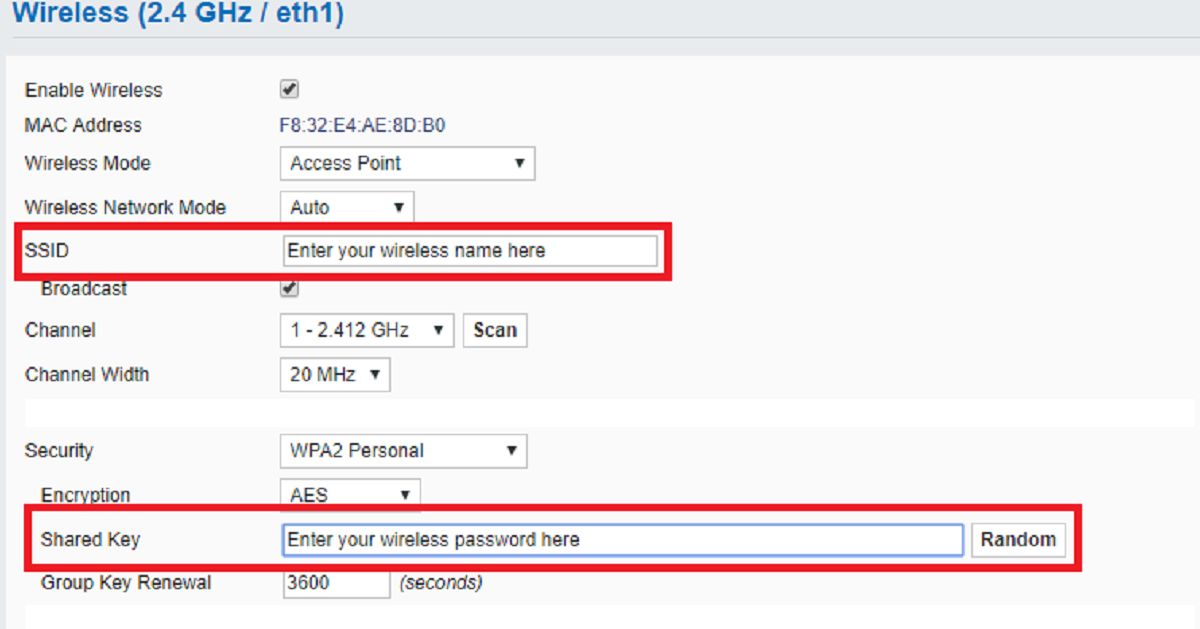Introduction
When it comes to using the internet on Wi-Fi networks, many people assume their online activities are private and secure. However, the truth is that utilizing public or unsecured Wi-Fi networks can expose your browsing data to prying eyes. This raises the question: can people see what you search on Wi-Fi?
Before delving into this topic, it’s important to understand how Wi-Fi works. Wi-Fi, short for Wireless Fidelity, is a technology that allows devices to connect to the internet wirelessly, using radio waves instead of physical cables.
Wi-Fi relies on routers, which transmit and receive data between the internet and connected devices. These routers typically have built-in security features, such as encryption protocols, that are designed to protect the data being transmitted over the network.
However, despite these security measures, it is still possible for someone to intercept and view your internet searches while connected to a Wi-Fi network. This vulnerability is especially prevalent on public or unsecured networks, where the data being transmitted is not properly encrypted.
When you search for something on the internet, your device sends a request to the search engine, which then retrieves the relevant information and sends it back to your device. This information is usually transmitted over the internet in the form of data packets.
If you are connected to an unsecured Wi-Fi network, these data packets can potentially be intercepted by other devices on the same network. This means that anyone with the right tools and knowledge can potentially see what you search on Wi-Fi.
This raises concerns regarding privacy and the security of personal information. Your search history may contain sensitive information, such as login credentials, medical queries, financial transactions, or personal communications. If this data falls into the wrong hands, it can be used for malicious purposes such as identity theft or blackmail.
Therefore, it is crucial to be aware of the risks associated with unsecured Wi-Fi networks and take necessary steps to protect your online activities. In the following sections, we will explore the risks of using unencrypted Wi-Fi networks, ways your searches can be visible on Wi-Fi, and steps you can take to safeguard your browsing data.
How Does Wi-Fi Work?
Before discussing the visibility of search queries on Wi-Fi, it’s essential to have a basic understanding of how Wi-Fi technology functions.
Wi-Fi operates by using radio waves to transmit data between devices and a router. This wireless technology allows you to connect to the internet without the need for physical cables.
When you connect your device, such as a smartphone or laptop, to a Wi-Fi network, it communicates with the router through radio wave signals. The router serves as the central hub that connects you to the internet.
Wi-Fi networks function on specific frequencies within the radio wave spectrum. These frequencies, typically 2.4 gigahertz (GHz) or 5 GHz, enable the transmission of data between devices and the router. The frequency bands used for Wi-Fi are unlicensed, meaning they can be used by anyone without requiring governmental authority or permits.
To establish a connection, your device sends data packets to the router, requesting access to the internet or specific websites. The router then sends these data packets to the appropriate destination, be it a website server or an online search engine.
When the requested information is received, the router forwards the data packets back to your device, allowing you to access the website or view the search results.
It’s important to note that the data being transmitted over a Wi-Fi network can be encrypted or unencrypted, depending on the security protocols in place.
Encryption adds a layer of protection by encoding the data, making it difficult for unauthorized individuals to intercept and understand the information. Common encryption methods for Wi-Fi networks include Wired Equivalent Privacy (WEP), Wi-Fi Protected Access (WPA), and WPA2.
With an encrypted Wi-Fi network, your search queries and other online activities are shielded from prying eyes within the network. However, unencrypted Wi-Fi networks pose a significant risk to your online privacy.
In the next section, we will explore whether people can see what you search on Wi-Fi, particularly on unencrypted networks, and the potential risks associated with such visibility.
Can People See What You Search on Wi-Fi?
When using a Wi-Fi network, especially public or unsecured ones, there is a legitimate concern about the privacy of your search queries. The short answer is yes, people can potentially see what you search on Wi-Fi under certain circumstances.
While Wi-Fi networks have built-in security measures, such as encryption protocols, they are not infallible. Unencrypted Wi-Fi networks, in particular, pose a considerable risk to your online privacy. These networks do not provide any encryption for the data being transmitted, making it easier for others to intercept and view your internet activity.
If you are connected to an unencrypted Wi-Fi network, anyone within range of the network who has the right tools and knowledge can potentially monitor and capture your search queries. This includes both the network administrator and other users connected to the same network.
For example, in public places like cafes, libraries, or airports, the Wi-Fi networks are usually open and unsecured. This means that anyone with a device and a packet-sniffing tool can intercept and analyze the data packets being transmitted between your device and the router.
This method of capturing data is known as packet sniffing, and it can provide the interceptor with information about your search terms, URLs visited, and other online activities.
Additionally, some malicious individuals may set up rogue Wi-Fi networks with names similar to legitimate ones, enticing users to connect to them unknowingly. These fake networks enable the attackers to monitor and capture all the data transmitted by the connected devices, including your search queries.
Even on encrypted Wi-Fi networks, there is still a small possibility for someone with advanced hacking skills to bypass the encryption and gain access to the data being transmitted. However, such scenarios are rare and require exceptionally skilled individuals.
Fortunately, there are steps you can take to protect your search queries and maintain your privacy while using Wi-Fi networks. In the next section, we will discuss the risks associated with unencrypted Wi-Fi networks and provide tips on safeguarding your internet searches.
Risks of Unencrypted Wi-Fi Networks
Unencrypted Wi-Fi networks present several risks to your online privacy and security. These networks lack the encryption protocols that protect your data from being intercepted and viewed by unauthorized individuals. Understanding these risks is crucial to take appropriate measures to safeguard your browsing activities.
One of the major risks of using unencrypted Wi-Fi networks is the potential for eavesdropping. Without encryption, the data packets sent between your device and the router can be captured by anyone within range of the network. This means that cybercriminals, hackers, or even casual snoopers could intercept and potentially see your search queries.
When your search queries are visible, it puts your privacy at stake. Your search history may contain sensitive information, including personal details, banking credentials, and even login credentials for various online platforms. This data can be exploited for identity theft, fraud, or other malicious activities.
In addition to the privacy risks, unencrypted Wi-Fi networks also expose you to the possibility of attacks such as man-in-the-middle (MITM) attacks. In an MITM attack, a malicious actor intercepts the communication between your device and the router, allowing them to access and alter the data exchanged.
With access to your search queries, an attacker could manipulate the search results, redirect you to malicious websites, or inject malicious code into the websites you visit. This puts your device and personal information at risk of malware infections, phishing attempts, or other cyber threats.
Moreover, unencrypted Wi-Fi networks also make you susceptible to Wi-Fi spoofing attacks. Attackers can create rogue access points with names similar to legitimate networks, tricking you into connecting to their network. Once connected, they can monitor your internet activity and potentially capture your search queries.
It’s essential to be aware of these risks and take precautions when using unencrypted Wi-Fi networks. In the next section, we will explore ways your search queries can be visible on public Wi-Fi and provide steps you can take to protect your browsing activities.
Ways Your Searches Can Be Visible on Public Wi-Fi
When connected to a public Wi-Fi network, your search queries can be at risk of being visible to others. Here are some common ways your searches can be intercepted and viewed:
- Packet Sniffing: Packet sniffing is a method used by attackers to capture and analyze the data packets being transmitted over a Wi-Fi network. By intercepting these packets, they can gain access to your search queries and other online activities.
- Man-in-the-Middle (MITM) Attacks: In a MITM attack, an attacker positions themselves between your device and the router, intercepting and potentially altering the data exchanged. This allows them to view your search queries and manipulate the results.
- Rogue Access Points: Attackers can set up fake Wi-Fi networks with names similar to legitimate ones, tricking users into connecting to their network. Once connected, the attackers can monitor and capture your search queries and other online activities.
- Unsecured Websites: Even if your connection to the Wi-Fi network is encrypted, if you visit websites that are not secured with HTTPS, your search queries can be visible to anyone monitoring the network. HTTPS encrypts the data between your device and the website, providing an extra layer of protection.
- Malware on Devices: If your device is infected with malware, it can compromise your online privacy and expose your search queries. Malware can track your internet activity and transmit the captured data to malicious actors.
These methods highlight the vulnerabilities present on public Wi-Fi networks. It’s important to be aware of these risks and take necessary precautions to protect your search queries and maintain your privacy.
In the next section, we will provide steps you can take to safeguard your browsing activities and mitigate the risks associated with using public Wi-Fi networks.
Steps to Protect Your Searches on Wi-Fi
While using Wi-Fi networks, especially public ones, it’s crucial to take proactive steps to protect your search queries and maintain your online privacy. Here are some effective measures you can implement:
- Connect to Encrypted Wi-Fi Networks: Whenever possible, connect to Wi-Fi networks that are encrypted with protocols like WPA2. Encrypted networks add a layer of security by encrypting the data transmitted between your device and the router, making it difficult for others to intercept and view your search queries.
- Use a Virtual Private Network (VPN): A VPN creates a secure and encrypted connection between your device and the internet. It masks your IP address and encrypts your data, preventing anyone on the same network from seeing your search queries. Look for reputable VPN providers and use their services to enhance your privacy.
- Avoid Unsecured Websites: Stick to websites that use HTTPS encryption, especially when entering sensitive information or conducting online searches. HTTPS ensures that the data exchanged between your device and the website remains encrypted, making it harder for anyone to intercept your search queries.
- Enable Two-Factor Authentication (2FA): Implement 2FA whenever possible, particularly for accounts that contain sensitive information. Two-factor authentication adds an extra layer of security by requiring a second form of verification, such as a code sent to your mobile device, in addition to your password.
- Keep Your Device Updated: Regularly update your devices, including smartphones, laptops, and tablets, with the latest security patches. Software updates often contain important security fixes that can help protect against vulnerabilities that attackers may exploit.
- Use Secure Browsing Settings: Configure your web browser to enhance your privacy and security. Enable features like “Do Not Track” and “Block Third-Party Cookies” to reduce the amount of data collection from websites and advertisers.
- Be Mindful of Wi-Fi Networks: Exercise caution when connecting to public Wi-Fi networks. Verify the network’s legitimacy and look for networks that require a password or have a trusted name. Avoid connecting to networks with generic names or ones that have weak security measures.
- Consider Using Private Mobile Hotspots: If you frequently need to connect to unknown or untrusted Wi-Fi networks, consider using a private mobile hotspot instead. This allows you to create a secure Wi-Fi network using your mobile data connection, reducing the risks associated with public Wi-Fi networks.
By implementing these steps, you can significantly enhance your privacy and protect your search queries from being visible on Wi-Fi networks. However, it’s important to note that no security measure is foolproof. It’s always best to exercise caution and be mindful of the information you share while using any type of network.
Importance of Using a VPN
Using a Virtual Private Network (VPN) is becoming increasingly important in today’s digital landscape, especially when it comes to protecting your privacy and securing your search queries while using Wi-Fi networks. Here are some key reasons why using a VPN is crucial:
- Enhanced Privacy: A VPN creates a secure and encrypted connection between your device and the internet. By routing your internet traffic through a VPN server, it masks your IP address and encrypts your data, making it extremely difficult for anyone on the same network to intercept and view your search queries.
- Protection on Public Wi-Fi: Public Wi-Fi networks, such as those found in cafes, airports, or hotels, are often unsecured and vulnerable to attacks. When connected to a VPN, your data is encrypted, safeguarding your search queries from potential eavesdroppers and hackers lurking on the network.
- Bypassing Geographic Restrictions: A VPN allows you to bypass geographic restrictions and access content that may be blocked in your location. By connecting to a VPN server in a different region, you can enjoy unrestricted access to websites, streaming services, and other online platforms.
- Secure Remote Access: If you frequently work remotely or access sensitive information from external networks, using a VPN is essential. It establishes a secure connection between your device and your workplace’s network, ensuring that your search queries and other online activities remain protected.
- Anonymity: When you connect to the internet through a VPN, your online activities are associated with the VPN’s IP address, not your actual IP address. This provides an additional layer of anonymity, as your search queries cannot be easily traced back to you.
- Preventing Data Throttling: Internet service providers (ISPs) are known to throttle the bandwidth of certain activities, such as streaming or downloading. By using a VPN, you can encrypt your internet traffic, making it challenging for your ISP to monitor and selectively throttle your connection based on your search queries.
It’s important to choose a reputable VPN provider that prioritizes privacy and has a no-logs policy. A no-logs policy ensures that the VPN provider does not store or track your online activities, further enhancing your privacy.
Remember, while a VPN is an effective tool for protecting your search queries on Wi-Fi networks, it is not a standalone solution. It’s crucial to combine VPN usage with other security practices, such as using encrypted websites and practicing good internet hygiene.
In the next section, we will explore other types of information that can be seen on Wi-Fi networks, highlighting the importance of taking comprehensive measures to protect your privacy while using the internet.
What Else Can Be Seen on Wi-Fi?
While the visibility of your search queries on Wi-Fi networks is a significant concern, it’s important to realize that other types of information can also be visible to others on the same network. Here are some examples of what else can be seen on Wi-Fi:
- Website Visits: When you browse the internet on Wi-Fi, the URLs of the websites you visit can be visible to others. This means that someone with the right tools can potentially see the specific websites you access, even if they can’t see the exact search queries you submit on those websites.
- Emails and Messages: If you access your email or messaging apps while connected to Wi-Fi, the content of your emails and messages can potentially be intercepted and viewed. This includes both the text of the messages and any attachments.
- Online Purchases: When you make purchases on Wi-Fi, the details of your transactions, including the items you buy and the payment information you provide, can be visible to others. This puts your financial information at risk if the network is insecure.
- Login Credentials: If you log into websites or online accounts while connected to Wi-Fi, your login credentials, such as usernames and passwords, can potentially be intercepted. This puts your accounts and personal information at risk of being compromised.
- File Transfers: When you send or receive files over Wi-Fi, the content of those files can be visible to others. Whether it’s documents, images, or other types of files, they can potentially be intercepted and accessed by unauthorized individuals on the network.
- Online Activity Patterns: Even if the content of your search queries is not visible, someone monitoring the Wi-Fi network can still analyze your online activity patterns. They can observe the frequency and duration of your visits to certain websites, potentially gaining insights into your interests and behaviors.
It’s crucial to recognize that these types of information can be valuable to cybercriminals or organizations seeking to exploit your data for various purposes. Taking comprehensive measures to protect your privacy on Wi-Fi networks is essential to safeguard all aspects of your online activities.
In the final section, we will summarize the key points discussed and reiterate the importance of implementing the suggested measures to protect your searches and maintain your online privacy on Wi-Fi networks.
Conclusion
When using Wi-Fi networks, it’s important to be aware of the potential risks to your privacy, especially regarding the visibility of your search queries. Public or unsecured Wi-Fi networks can leave your search queries vulnerable to interception and monitoring by malicious individuals.
While it is possible for others to see what you search on Wi-Fi, there are proactive measures you can take to protect your online privacy. Connecting to encrypted Wi-Fi networks, using VPNs, and sticking to secure websites are effective strategies to safeguard your search queries from prying eyes.
Additionally, it’s crucial to be mindful of the other types of information that can be visible on Wi-Fi networks, such as website visits, emails, online purchases, and file transfers. Taking comprehensive steps, such as practicing good internet hygiene, enabling two-factor authentication, and regularly updating your devices, will further enhance your online security.
By understanding the risks and implementing these measures, you can ensure that your search queries and other online activities remain private and secure while using Wi-Fi networks. Prioritizing your online privacy will help protect your personal information, financial security, and overall digital well-being.
Remember, it’s always better to be cautious and proactive when it comes to protecting your privacy on Wi-Fi networks. Stay informed, stay vigilant, and take the necessary steps to maintain your privacy in the ever-evolving digital landscape.













![How To Increase Your Internet Speed Right Now [GUIDE]](https://robots.net/wp-content/uploads/2022/04/how-to-increase-your-internet-speed-featured-300x175.jpg)











